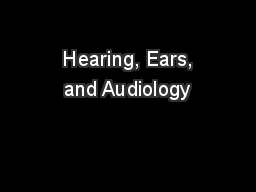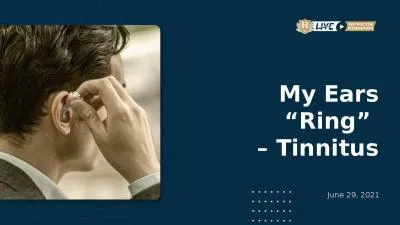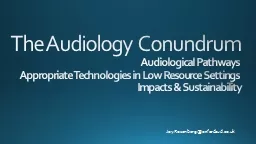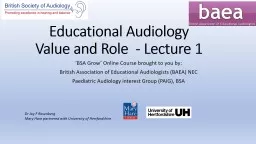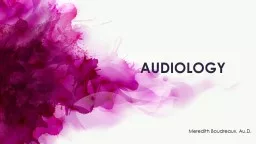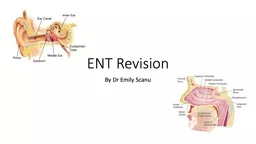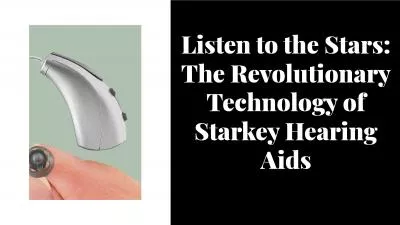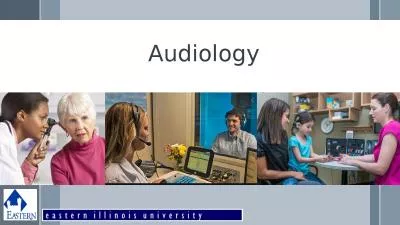PPT-Hearing, Ears, and Audiology
Author : cheryl-pisano | Published Date : 2020-04-02
Where Does Sound Come From A vibration creates a wave Travels through liquids solids and gases Frequency Pitch Bass to treble Amplitude Loudness Volume Outer
Presentation Embed Code
Download Presentation
Download Presentation The PPT/PDF document " Hearing, Ears, and Audiology" is the property of its rightful owner. Permission is granted to download and print the materials on this website for personal, non-commercial use only, and to display it on your personal computer provided you do not modify the materials and that you retain all copyright notices contained in the materials. By downloading content from our website, you accept the terms of this agreement.
Hearing, Ears, and Audiology: Transcript
Where Does Sound Come From A vibration creates a wave Travels through liquids solids and gases Frequency Pitch Bass to treble Amplitude Loudness Volume Outer Ear PinnaOuter Ear Funnels sound waves into the ear canal. Caroline Payne. . Principal Audiologist. Chime Social Enterprise. Historical perspective. Audiology in this area (Exeter, Mid and East Devon) has run clinics in local special schools for many years in order to provide the school entry hearing screen.. Introduction & History. Classifications. Nomenclature. Types of gears. Objectives & applications. Numerical Analysis. G. EARS . I. ntroduction. A . G. ear. is a . rotating. . machine. part having cut . TR. UT. H. Don McClain. 1. W. 65th St church of Christ / February 10, 2007. Much Of Modern Preaching . Is full of error –. Misuses Scripture -. Caters to people who do not care for God. Caters to people whose first love is themselves – . By . Stephanie. Does this animal have ears? . Yes. What shape is the animal’s ears? . Triangular shaped ears.. How does the animal hear?. Horses hear very well because. their ears are shaped like cups. 14earsfeelblockedfromtheinsideWhatisthebestwaytoclearthemAEars can be blockeddue to a number of reasons The external ear canal can be blocked with earwax or a small foreign object Earwax is normal in . Tinnitus. June 29. , . 2021. Tinnitus. is a common auditory system problem. It is defined as. :. The sensation of sound without external stimulation or the . conscious . experience. . of . sound that originates in the head. . Appropriate Technologies in Low Resource Settings . Impacts & Sustainability. Joy.Rosenberg@oxfordaud.co.uk. Aims. Convey our experiences related to deafness and development. Joy Rosenberg. Kelvin Hawker . ‘BSA Grow’ Online Course brought to you by:. British Association of Educational Audiologists (BAEA) NEC. Paediatric Audiology interest Group (PAIG), BSA. Dr Joy F Rosenberg. Mary Hare partnered with University of Hertfordshire. Au.D. .. What is an Audiologist?. A licensed healthcare professional who specializes in the evaluation, diagnosis, and treatment of hearing loss, balance disorders, tinnitus in adults, children and infants.. Outline:. . Ears:. Hearing Loss . Vertigo. Otalgia – OE/AOM/OME/. Mastoiditis. Nose (and face):. Sinusitis. Bell’s Palsy. Ramsay Hunt Syndrome . . Throat:. Sore throat – tonsillitis/laryngitis/. 1 BAA OD1778 Version 3: Octo ber 2 017 EDUCATION, ACCREDITATION AND PROFESSIONAL DEVELOPMENT COMMITTEE Guidance Document: Registration O ptions in Audiology Octob er 2017 2 BAA OD1778 Version 3 Immerse yourself in the world of celestial sound with \'Listen to the Stars: The Revolutionary Technology of Starkey Hearing Aids.\' Explore how Starkey\'s cutting-edge hearing aids are transforming auditory experiences, connecting you with the symphony of life. Uncover the seamless blend of innovation and comfort, offering a new dimension to hearing clarity. From advanced features to personalized settings, this book unveils the future of hearing technology. Join the journey of rediscovering the beauty of sound, one hashtag at a time: #StarkeyHearingAids #InnovationInHearing #AuditoryTechnology #SoundClarity #HearingSolutions #PersonalizedSound #EmpowerHearing #FutureOfAudiology #EnhancedListening #ConnectWithSound. Experience a hearing revolution with \'Revolutionizing Hearing Care: The Innovative Technology of Oticon Hearing Aids.\' Discover unrivaled sound clarity and personalized experiences, as Oticon transforms hearing solutions. Explore groundbreaking technology that connects, performs, and empowers. Embrace the future of hearing care where innovation meets comfort and communication knows no bounds. Join the movement: Thank-you for doing the presentation at your school!. A Career as a . Audiologist. What DOES . An AUDIOLOGIST do. ?. ·Audiologists . work with patients of all ages from newborns to elderly who present with hearing and balance .
Download Document
Here is the link to download the presentation.
" Hearing, Ears, and Audiology"The content belongs to its owner. You may download and print it for personal use, without modification, and keep all copyright notices. By downloading, you agree to these terms.
Related Documents

